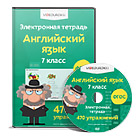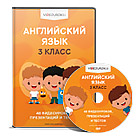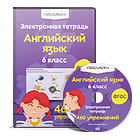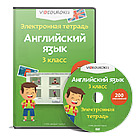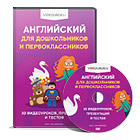The theme: Animals of Australia.
The aims of the lesson • To give information about Typical animals in Australia
• To teach them to learn about abovementioned animals and learn to speak about them;
• To teach them to give feedback in groups and individually.
Саба? ?дісі: Баяндау, с?ра?-жауап
К?рнекілігі: та?ырыпты? суреттер
П?н аралы? байланыс: БИОЛОГИЯ, география
Саба? барысы:
I.?йымдастыру
II. О?ушыларды топпен отыр?ызу, о?ушылар?а коала мен кенгуруды? ?иыл?ан суреттерін тарату ж?не оны ??рату ар?ылы саба?ты? та?ырыбын шы?ару.
Саба?ты? та?ырыбымен, ма?саттарымен таныстыру
О?ушылардан Австралия туралы білетіндерін ?айталату ар?ылы еске т?сіру.
Слайд ар?ылы Австралияда кездесетін жануарлар туралы м?ліметтер беру, д?птерлеріне жаз?ызып отыру.
Some Australian animals are extremely unique and special but when you grow up here you don't realise that, of course.
Growing up in the outback around Tibooburra New South Wales we saw a lot of them but we didn't really see anything special about them. To us they were just something we saw every day.
As kids growing up in the bush we all knew to keep away from the snakes, if you saw one. (and we often did!). We also knew from an early age not to mess with the lizards either as one of our brothers had a lizard latch on to his finger and had a hard time getting the bugger to let go!
Our father taught us a healthy respect for all animals
There are variety of species unique to Australia. everyone in the world knows what an Australian Kangaroo looks like, and who doesn't love the Koala? or isn't a little freaked out by the Platypus and then there's the cute little Bilby, the adorable Quokka, and, of course our Snakes and Lizards, which most Aussie's are secretly proud of. even if they say different!
Since mankind's existence in Australia a lot of different animals have been introduced and are now roaming around feral. animals like the Camel, the Rabbit and the hideous Cane Toad. The first introduced animal was the Dingo which has been here for thousands of years.
The European settlers deliberately released many different animals into the Australian native bush.
Other domestic animals have escaped and now have large populations roaming the Australian outback. all of which are creating problems for our native Australian animals.
Click on each of the links below to discover more about our wonderful Australian animals
Australian Bilby
The Bilby is one of our cutest Australian animals. Bilbies used to cover about 70% of the Australian mainland but the introduction of new predators, such as feral cats and foxes, and land clearance has caused a dramatic decline in their numbers and their range.
In fact, one species, the Lesser Bilby is believed to be extinct, with the last record of it being in the 1930's, the other, the Greater Bilby, survives but remains endangered. Read more about the Bilby
Camels in Australia
Camels in Australia are Dromedary Camels.
Thousands of camels were imported into Australia between 1840 and 1907. Australian Camels have a wide range, from South Australia through the Northern Territory and well into Western Australia, there have also been Camels reported in Northern New South Wales and Queensland.
Australia has the worlds largest population of feral Camels and are the only feral herds of their kind in the world. Read more about Australian Camels
Cane Toads in Australia
The Cane Toad was introduced into northern Queensland, Australia in 1935, to control the beetles that were destroying the sugar cane crops. About 100 Cane Toads were shipped here from Hawaii. They failed to control the cane beetles, and became and continue to be a major pest themselves. Since then, the range of Cane Toads has grown quite alarmingly through Australia's north. Read more about the Cane Toad
Australian Crocodiles
There are two types of Australian Crocodile, the Australian Freshwater or Johnston Crocodile and the Australian Estuarine or Saltwater Crocodile.
The Freshwater Crocodile or Johnston Crocodile is considered to be dangerous even though it is not known for attacking humans. It grows up to 3 metres long.
Read more about Australian Freshwater Crocs
The Saltwater Crocodile or Estuarine Crocodile is one of the most dangerous of all the crocodile family and the largest living reptile in the world. It grows to between 4 and 7 metres long.Read more about the Australian Saltwater Croc
Australian Dingo
The Dingo is Australia's wild dog.
Dingoes are an introduced species - opinions on when the Dingo came to Australia vary greatly, and range from 15,000 to 2,000 years ago. Dingoes are found on the mainland of Australia but about a third of all wild Dingoes in the south east of the continent are Dingo/domestic dog crosses.
The Dingo normally weighs between 10kg and 24kg, they stand between 44cm and 63cm high to the shoulder. Read more about the Dingo
Echidna
The Short-beaked Echidna is one of the most wide spread Australian animals and is the only species of Echidna in Australia. The Short-beaked Echidna, along with the Platypus, is a member of the monotreme family (mammals that lay eggs). The echidna is shy and moves slowly and carefully, if it feels threatened or is disturbed it will dig its way into the ground leaving only its spines visible.The Short-beaked Echidna is common and widespread.
Read more about the Echidna
Grey Kangaroo
The Kangaroo is the most well known of all Australian animals. There are approximately 63 living species of Kangaroo. These include the Eastern and Western Grey, Wallabies, Wallaroos and Tree-Kangaroos. The Kangaroo is a marsupial mammal. Read more about one of our great Australian animals. the Grey Kangaroo
Red Kangaroo
The Red Kangaroo is the largest of all the Kangaroos. The male can be 2 metres tall and weigh 90kg. They are also the largest mammal in Australia and the largest living marsupial in the world. Read more about the Red Kangaroo
Tree Kangaroo
The Tree Kangaroo is a marsupial and like all marsupials, the Tree Kangaroo has a pouch. There are around 10 species of Tree Kangaroo most of which are found in New Guinea.
The two species that are found in Australia are; Lumholtz's Tree Kangaroo and Bennett's Tree Kangaroo.
The Australian Tree Kangaroos are found in rainforest areas of Queensland. Read more about the Tree Kangaroo
Koala
The Koala is one of the most loved of the Australian animals. Early settlers called them a Bear, and they are sometimes still referred to as the Koala Bear, although they are not a member of the Bear family. The Koala is a marsupial mammal. Read more about the Koala
Australian Lizards
Lizards of different kinds are found all over Australia but more frequently in the desert area and the tropical woodlands of northern Australia. There are more Lizards in Australia than anywhere else in the world - with over 520 species to be found in our great country.
The main family varieties are Monitor Lizards, Geckos, Dragon Lizards, Skinks and Legless Lizards - also known as Snake Lizards. Read more about Australian Lizards
Numbat
The Numbat is also known as the Banded Anteater and Walpurti and is a unique looking Australian animal. Before European settlement they were found over a lot of Australia. The Numbat is a carnivorous marsupial. Read more about the Numbat
Platypus
The Platypus is one of the strangest Australian animals.
It lays eggs instead of giving birth to live young. Often called the Duck Billed Platypus because of its Bill. The Platypus is one of only a few venomous mammals. Read more about the Platypus
Possum
The Leadbeaters Possum are very rarely seen. They are small, agile and move fast, often leaping from tree to tree. They live in small family colonies and the females are dominant. The Leadbeaters Possum is a nocturnal marsupial. Read more about the Leadbeaters Possum
Quokka
The Quokka is another one of our cute Australian animals. The Quokka is a small marsupial like the Tree Kangaroo or small Wallaby, but unlike other Wallabies, it has a short stiff tail and short hind feet. Its ears are more rounded than those of other Wallabies, and its skull and teeth are different.
Quokkas are found on Rottnest Island off the coast of Western Australia, where they are plentiful, they are also found in small groups on the mainland in the southwest of Western Australia. Read more about the Quokka
Quoll
The Quoll or native cat is a carnivorous marsupial native to Australia and Papua New Guinea and looks a bit like a cross between a cat and a possum.
Four species of Quoll can be found in Australia: the Northern Quoll, the Spotted-tailed Quoll, the Eastern Quoll and the Western Quoll. The Spotted-tailed Quoll is the largest carnivorous marsupial found on the mainland of Australia. Read more about the Quoll
Rabbits in Australia
Rabbits in Australia started to multiply alarmingly after Thomas Austin released 24 on his property in Victoria in 1859. Within 10 years the original 24 Rabbits had increased so much that two million could be shot or trapped yearly without having any apparent effect on the population. It was the fastest recorded spread of a mammal anywhere in the world.
Today Rabbits are located in the southern and central areas of Australia, with random populations in the northern desert regions. Read more about Australian Rabbits
Australian Sea Lion
The Australian Sea Lion inhabits the ocean around Australia, and nowhere else. Sea Lions, like Seals, are 'pinnipeds', which means 'fin foot'.
They are marine mammals, which are able to swim in extremely cold water. Along with fur-seals, sea-lions belong to the eared seal family, they are different from true seals because they have external ears, and they are more agile on the land and move through the water using their front flippers. Read more about the Sea Lion
Great White Shark
Great White Sharks live in coastal and offshore waters which have a water temperature of between 12 degrees and 24 degrees Celsius. In Australia they have been recorded from southern Queensland to northwestern Western Australia. The Great White Shark belongs to the group of Mackerel Shark. Read more about the Great White Shark
Australian Snakes
Snakes are found all over Australia. There are about 140 species of land snakes in Australia.
About 100 snakes in Australia are venomous, of these 12 are more likely to be life threatening if you are bitten. A venomous snake is a snake that uses modified saliva, venom, delivered through fangs in its mouth, to immobilize or kill its prey. The deadliest snakes found in Australia include Brown Snakes, Death Adders, Red-bellied Black Snakes, Taipan Snakes, Copperheads, and Tiger Snakes.
Snakes vary in size and weight, although they have the same basic body structure. Read more about Australian Snakes
Tasmanian Devil
The Tasmanian Devil as their name suggests are now found only in the state of Tasmania. They can run up to 13 km per hour for short distances. Tasmanian Devils are the largest carnivorous marsupial in Australia. Read more about the Tasmanian Devil
Hairy Nosed Wombat
Hairy-nosed Wombats like all Wombats are not seen as often as some other Australian animals. Nicknamed the bulldozer of the bush for its burrowing. The Koala is their closest relative. The Wombat is a marsupial. Read more about the Hairy Nosed Wombat
О?ушылар?а Австралия жануарлары туралы видео к?рсету
«Who is it?» ойыны
Та?тада?ы суреттерді к?рсету ар?ылы о?ушылар а?дарды? атын тауып, ол туралы а?ылшынша айту.
THE CROSSWORD (с?зж?мба? шешу)
?орытынды б?лім
Quiz: What do you know about Australia
Reflection:
I know……….
I have heard…….
I want to know…….
Ба?алау : О?ушыларды ?здерін-?здеріне ба?алату
?й тапсырмасы: Plants of Australia м?лімет жинау
Our lesson is over good bye!
Просмотр содержимого документа
«animals of Australia»
The theme: Animals of Australia.
The aims of the lesson • To give information about Typical animals in Australia
• To teach them to learn about abovementioned animals and learn to speak about them;
• To teach them to give feedback in groups and individually.
Сабақ әдісі: Баяндау, сұрақ-жауап
Көрнекілігі: тақырыптық суреттер
Пән аралық байланыс: БИОЛОГИЯ, география
Сабақ барысы:
I.Ұйымдастыру
II. Оқушыларды топпен отырғызу, оқушыларға коала мен кенгурудың қиылған суреттерін тарату және оны құрату арқылы сабақтың тақырыбын шығару.
Сабақтың тақырыбымен, мақсаттарымен таныстыру
Оқушылардан Австралия туралы білетіндерін қайталату арқылы еске түсіру.
Слайд арқылы Австралияда кездесетін жануарлар туралы мәліметтер беру, дәптерлеріне жазғызып отыру.
Some Australian animals are extremely unique and special but when you grow up here you don't realise that, of course.
Growing up in the outback around Tibooburra New South Wales we saw a lot of them but we didn't really see anything special about them.... To us they were just something we saw every day.
As kids growing up in the bush we all knew to keep away from the snakes, if you saw one... (and we often did!).... We also knew from an early age not to mess with the lizards either as one of our brothers had a lizard latch on to his finger and had a hard time getting the bugger to let go!
Our father taught us a healthy respect for all animals
There are variety of species unique to Australia ... everyone in the world knows what an Australian Kangaroo looks like, and who doesn't love the Koala? or isn't a little freaked out by the Platypus and then there's the cute little Bilby, the adorable Quokka, and, of course our Snakes and Lizards, which most Aussie's are secretly proud of.... even if they say different!
Since mankind's existence in Australia a lot of different animals have been introduced and are now roaming around feral ... animals like the Camel, the Rabbit and the hideous Cane Toad. The first introduced animal was the Dingo which has been here for thousands of years.
The European settlers deliberately released many different animals into the Australian native bush.
Other domestic animals have escaped and now have large populations roaming the Australian outback ... all of which are creating problems for our native Australian animals.
Click on each of the links below to discover more about our wonderful Australian animals
Australian Bilby
T he Bilby is one of our cutest Australian animals. Bilbies used to cover about 70% of the Australian mainland but the introduction of new predators, such as feral cats and foxes, and land clearance has caused a dramatic decline in their numbers and their range.
he Bilby is one of our cutest Australian animals. Bilbies used to cover about 70% of the Australian mainland but the introduction of new predators, such as feral cats and foxes, and land clearance has caused a dramatic decline in their numbers and their range.
In fact, one species, the Lesser Bilby is believed to be extinct, with the last record of it being in the 1930's, the other, the Greater Bilby, survives but remains endangered. Read more about the Bilby
Camels in Australia

Camels in Australia are Dromedary Camels.
Thousands of camels were imported into Australia between 1840 and 1907. Australian Camels have a wide range, from South Australia through the Northern Territory and well into Western Australia, there have also been Camels reported in Northern New South Wales and Queensland.
Australia has the worlds largest population of feral Camels and are the only feral herds of their kind in the world. Read more about Australian Camels
Cane Toads in Australia

The Cane Toad was introduced into northern Queensland, Australia in 1935, to control the beetles that were destroying the sugar cane crops. About 100 Cane Toads were shipped here from Hawaii. They failed to control the cane beetles, and became and continue to be a major pest themselves. Since then, the range of Cane Toads has grown quite alarmingly through Australia's north. Read more about the Cane Toad
Australian Crocodiles
There are two types of Australian Crocodile, the Australian Freshwater or Johnston Crocodile and the Australian Estuarine or Saltwater Crocodile.

The Freshwater Crocodile or Johnston Crocodile is considered to be dangerous even though it is not known for attacking humans. It grows up to 3 metres long.
Read more about Australian Freshwater Crocs

The Saltwater Crocodile or Estuarine Crocodile is one of the most dangerous of all the crocodile family and the largest living reptile in the world. It grows to between 4 and 7 metres long.Read more about the Australian Saltwater Croc
Australian Dingo

The Dingo is Australia's wild dog.
Dingoes are an introduced species - opinions on when the Dingo came to Australia vary greatly, and range from 15,000 to 2,000 years ago. Dingoes are found on the mainland of Australia but about a third of all wild Dingoes in the south east of the continent are Dingo/domestic dog crosses.
The Dingo normally weighs between 10kg and 24kg, they stand between 44cm and 63cm high to the shoulder. Read more about the Dingo
Echidna

The Short-beaked Echidna is one of the most wide spread Australian animals and is the only species of Echidna in Australia. The Short-beaked Echidna, along with the Platypus, is a member of the monotreme family (mammals that lay eggs). The echidna is shy and moves slowly and carefully, if it feels threatened or is disturbed it will dig its way into the ground leaving only its spines visible.The Short-beaked Echidna is common and widespread.
Read more about the Echidna
Grey Kangaroo

The Kangaroo is the most well known of all Australian animals. There are approximately 63 living species of Kangaroo. These include the Eastern and Western Grey, Wallabies, Wallaroos and Tree-Kangaroos. The Kangaroo is a marsupial mammal. Read more about one of our great Australian animals ... the Grey Kangaroo
Red Kangaroo

The Red Kangaroo is the largest of all the Kangaroos. The male can be 2 metres tall and weigh 90kg. They are also the largest mammal in Australia and the largest living marsupial in the world. Read more about the Red Kangaroo
Tree Kangaroo

The Tree Kangaroo is a marsupial and like all marsupials, the Tree Kangaroo has a pouch. There are around 10 species of Tree Kangaroo most of which are found in New Guinea.
The two species that are found in Australia are; Lumholtz's Tree Kangaroo and Bennett's Tree Kangaroo.
The Australian Tree Kangaroos are found in rainforest areas of Queensland. Read more about the Tree Kangaroo
Koala

The Koala is one of the most loved of the Australian animals. Early settlers called them a Bear, and they are sometimes still referred to as the Koala Bear, although they are not a member of the Bear family. The Koala is a marsupial mammal. Read more about the Koala
Australian Lizards

Lizards of different kinds are found all over Australia but more frequently in the desert area and the tropical woodlands of northern Australia. There are more Lizards in Australia than anywhere else in the world - with over 520 species to be found in our great country.
The main family varieties are Monitor Lizards, Geckos, Dragon Lizards, Skinks and Legless Lizards - also known as Snake Lizards. Read more about Australian Lizards
Numbat

The Numbat is also known as the Banded Anteater and Walpurti and is a unique looking Australian animal. Before European settlement they were found over a lot of Australia. The Numbat is a carnivorous marsupial. Read more about the Numbat
Platypus

The Platypus is one of the strangest Australian animals.
It lays eggs instead of giving birth to live young. Often called the Duck Billed Platypus because of its Bill. The Platypus is one of only a few venomous mammals. Read more about the Platypus
Possum

The Leadbeaters Possum are very rarely seen. They are small, agile and move fast, often leaping from tree to tree. They live in small family colonies and the females are dominant. The Leadbeaters Possum is a nocturnal marsupial. Read more about the Leadbeaters Possum
Quokka

The Quokka is another one of our cute Australian animals. The Quokka is a small marsupial like the Tree Kangaroo or small Wallaby, but unlike other Wallabies, it has a short stiff tail and short hind feet. Its ears are more rounded than those of other Wallabies, and its skull and teeth are different.
Quokkas are found on Rottnest Island off the coast of Western Australia, where they are plentiful, they are also found in small groups on the mainland in the southwest of Western Australia. Read more about the Quokka
Quoll

The Quoll or native cat is a carnivorous marsupial native to Australia and Papua New Guinea and looks a bit like a cross between a cat and a possum.
Four species of Quoll can be found in Australia: the Northern Quoll, the Spotted-tailed Quoll, the Eastern Quoll and the Western Quoll. The Spotted-tailed Quoll is the largest carnivorous marsupial found on the mainland of Australia. Read more about the Quoll
Rabbits in Australia

Rabbits in Australia started to multiply alarmingly after Thomas Austin released 24 on his property in Victoria in 1859. Within 10 years the original 24 Rabbits had increased so much that two million could be shot or trapped yearly without having any apparent effect on the population. It was the fastest recorded spread of a mammal anywhere in the world.
Today Rabbits are located in the southern and central areas of Australia, with random populations in the northern desert regions. Read more about Australian Rabbits
Australian Sea Lion

The Australian Sea Lion inhabits the ocean around Australia, and nowhere else. Sea Lions, like Seals, are 'pinnipeds', which means 'fin foot'.
They are marine mammals, which are able to swim in extremely cold water. Along with fur-seals, sea-lions belong to the eared seal family, they are different from true seals because they have external ears, and they are more agile on the land and move through the water using their front flippers. Read more about the Sea Lion
Great White Shark

Great White Sharks live in coastal and offshore waters which have a water temperature of between 12 degrees and 24 degrees Celsius. In Australia they have been recorded from southern Queensland to northwestern Western Australia. The Great White Shark belongs to the group of Mackerel Shark. Read more about the Great White Shark
Australian Snakes

Snakes are found all over Australia. There are about 140 species of land snakes in Australia.
About 100 snakes in Australia are venomous, of these 12 are more likely to be life threatening if you are bitten. A venomous snake is a snake that uses modified saliva, venom, delivered through fangs in its mouth, to immobilize or kill its prey. The deadliest snakes found in Australia include Brown Snakes, Death Adders, Red-bellied Black Snakes, Taipan Snakes, Copperheads, and Tiger Snakes.
Snakes vary in size and weight, although they have the same basic body structure. Read more about Australian Snakes
Tasmanian Devil

The Tasmanian Devil as their name suggests are now found only in the state of Tasmania. They can run up to 13 km per hour for short distances. Tasmanian Devils are the largest carnivorous marsupial in Australia. Read more about the Tasmanian Devil
Hairy Nosed Wombat

Hairy-nosed Wombats like all Wombats are not seen as often as some other Australian animals. Nicknamed the bulldozer of the bush for its burrowing. The Koala is their closest relative. The Wombat is a marsupial. Read more about the Hairy Nosed Wombat
Оқушыларға Австралия жануарлары туралы видео көрсету
«Who is it?» ойыны
Тақтадағы суреттерді көрсету арқылы оқушылар аңдардың атын тауып , ол туралы ағылшынша айту.
THE CROSSWORD (сөзжұмбақ шешу)
| Қорытынды бөлім | Quiz: What do you know about Australia Reflection: I know………. I have heard…….. I want to know…….. |
Бағалау : Оқушыларды өздерін-өздеріне бағалату
Үй тапсырмасы: Plants of Australia мәлімет жинау
Our lesson is over good bye!






















